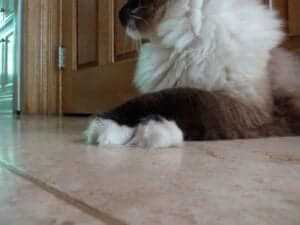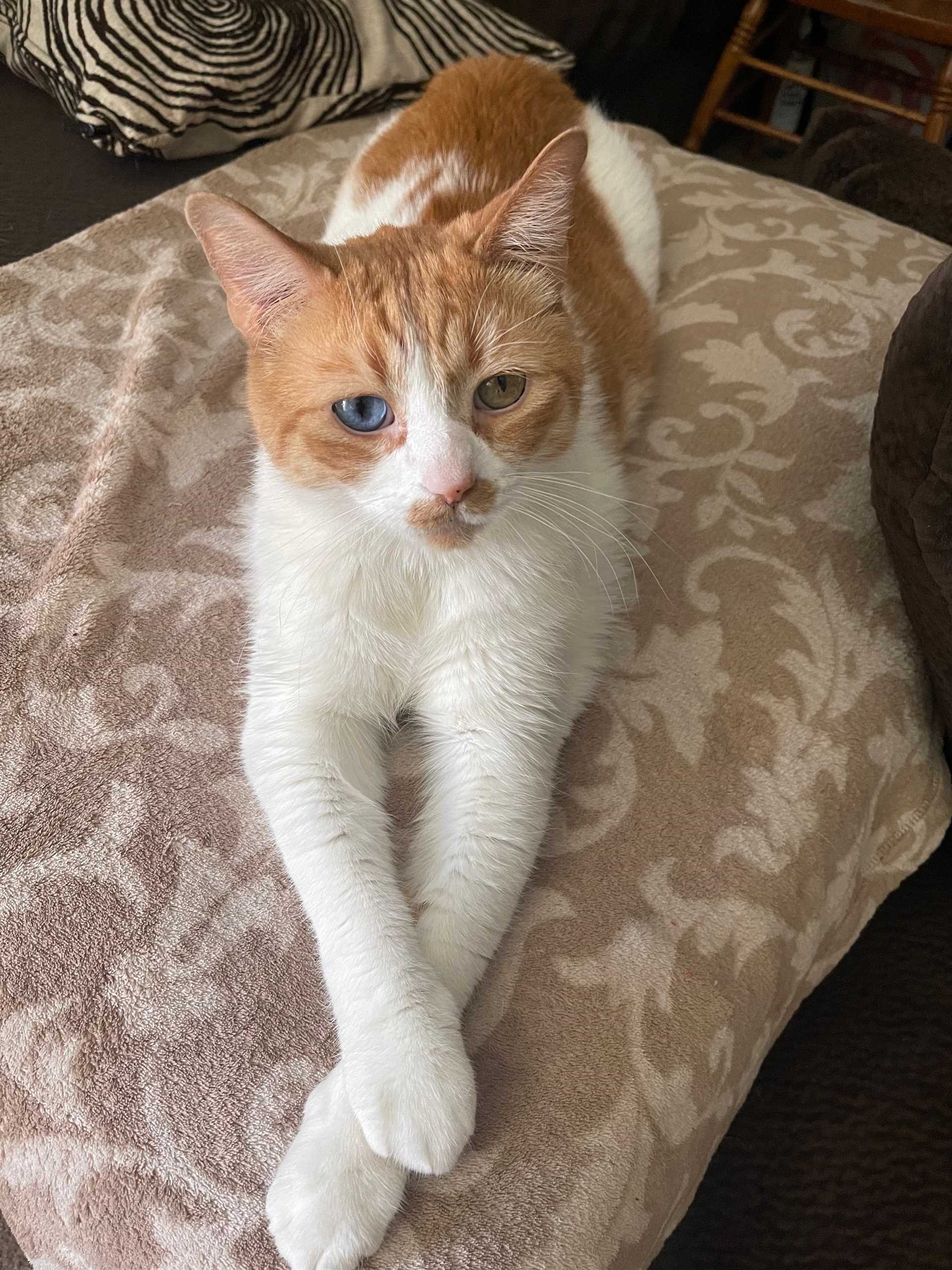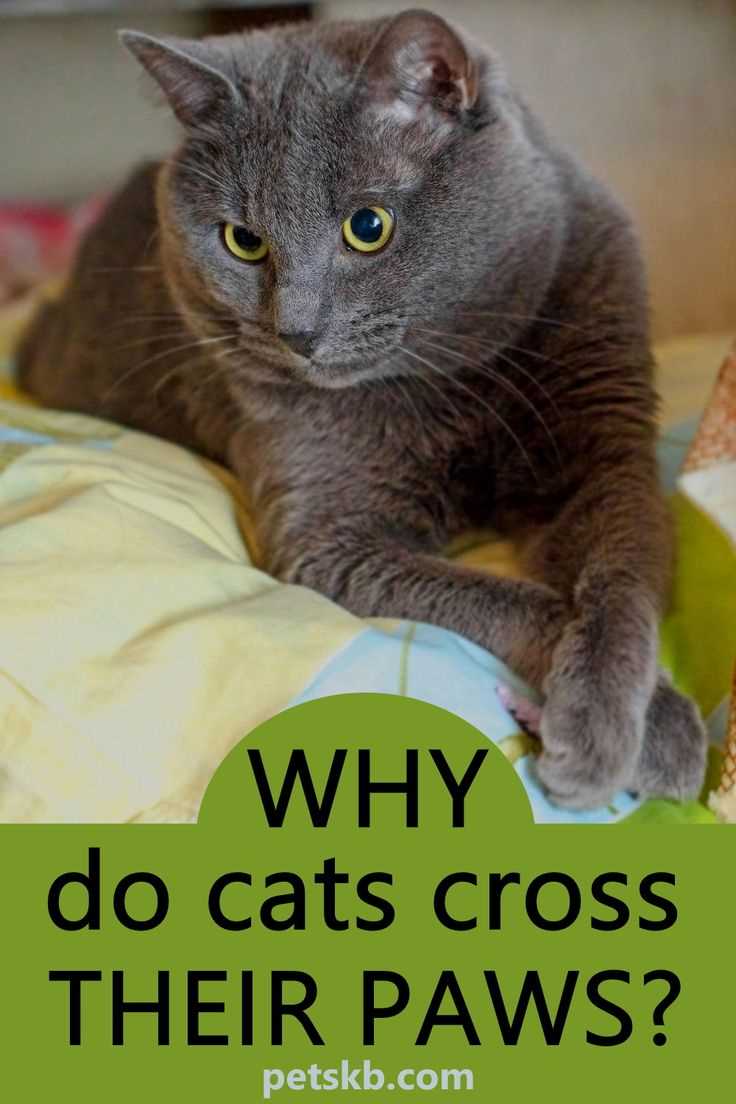In my daily routines, I often adopt an intriguing pose that catches the attention of my human companions. This isn’t just a random choice; it’s a reflection of my comfort and relaxation. When I tuck my limbs under me, it signifies that I feel safe and at ease in my environment. It’s my way of saying, “I’m relaxed and enjoying this moment.”
Observing my posture reveals much about my mood. A curled position indicates that I’m content, while a more stretched-out stance can suggest I’m in a playful or inquisitive state. This behavior might appear whimsical, but it serves a purpose, enhancing my overall sense of security and comfort in my habitat.
For my humans, understanding these signals can strengthen our bond. Recognizing when I’m in a relaxed state versus when I’m alert can help them respond appropriately to my needs. This not only aids in my well-being but also fosters a deeper connection between us. So, the next time you see me in this unique pose, know that it’s a sign of my happiness and peace in our shared space.
Understanding the Body Language of Felines
Pay close attention to the posture and movements of our kind. Tail position, ear orientation, and body stance provide insight into emotional states. A raised tail indicates happiness or curiosity, while a low or puffed tail can signal fear or aggression. Ears that swivel or flatten reveal alertness or irritation, respectively.
Posture Insights
When relaxed, you might notice a slight arch in the back or a stretched-out position. This indicates comfort and trust in the environment. Conversely, a hunched body suggests discomfort or anxiety. It’s essential to observe these signs to comprehend moods and needs accurately.
Vocalizations and Beyond

Sounds also play a role. Purring often denotes contentment, while hissing or growling indicates distress or a warning. Understanding these vocal cues, combined with body language, enhances communication with our human companions. For those curious about other feline behaviors, check out how long do cats go into heat for.
Common Reasons for Paw Positioning
When I sit with my legs tucked underneath me, it’s not just for comfort. Here are some insights into why I might choose this position:
- Relaxation: This stance can signal that I feel secure and at ease in my environment.
- Warmth: Keeping my paws tucked can help retain body heat, especially on colder days.
- Playfulness: Sometimes, this position indicates I’m ready for a fun chase or playful antics, even if it appears I’m just lounging.
- Attention-Grabbing: I might adopt this pose to capture the attention of my human, inviting interaction.
Behavioral Insights

Observing me while I’m in this position can reveal more about my mood. For instance, if I’m softly purring and my eyes are half-closed, it’s a clear sign of contentment. However, if I suddenly perk up, it might mean I’m alert to something interesting nearby.
Additionally, if you notice me smelling everything around, you might want to check out this link: why is my cat smelling everything. It can give you more context on my explorative nature.
How to Interpret Your Feline’s Behavior
Pay attention to the position of the tail. A high, upright tail indicates happiness and confidence, while a low or tucked tail suggests fear or submission. If it quivers slightly, that’s a sign of affection directed at you.
Observe the ears closely. Forward-facing ears show curiosity, while flattened ears indicate annoyance or fear. A quick flick can signal irritation, so it’s wise to give space if you see that.
The eyes reveal much about mood. Slow blinking can mean trust and affection, while wide eyes may indicate surprise or excitement. If you catch me staring with narrowed eyes, I might be feeling defensive or cautious.
Understanding Vocalizations
Different sounds convey various emotions. A soft purr usually means contentment, while a loud yowl can express distress or a desire for attention. Pay attention to the tone; a chirp often means I’m excited or trying to get your attention.
Behavioral Changes

Sudden changes in activity or eating habits can indicate stress or health issues. If I become withdrawn or overly aggressive, it’s essential to check in on my well-being. Regular observation helps you catch these shifts early.
Video:
In my daily routines, I often adopt an intriguing pose that catches the attention of my human companions. This isn’t just a random choice; it’s a reflection of my comfort and relaxation. When I tuck my limbs under me, it signifies that I feel safe and at ease in my environment. It’s my way of saying, “I’m relaxed and enjoying this moment.”
Observing my posture reveals much about my mood. A curled position indicates that I’m content, while a more stretched-out stance can suggest I’m in a playful or inquisitive state. This behavior might appear whimsical, but it serves a purpose, enhancing my overall sense of security and comfort in my habitat.
For my humans, understanding these signals can strengthen our bond. Recognizing when I’m in a relaxed state versus when I’m alert can help them respond appropriately to my needs. This not only aids in my well-being but also fosters a deeper connection between us. So, the next time you see me in this unique pose, know that it’s a sign of my happiness and peace in our shared space.
Understanding the Body Language of Felines
Pay close attention to the posture and movements of our kind. Tail position, ear orientation, and body stance provide insight into emotional states. A raised tail indicates happiness or curiosity, while a low or puffed tail can signal fear or aggression. Ears that swivel or flatten reveal alertness or irritation, respectively.
Posture Insights
When relaxed, you might notice a slight arch in the back or a stretched-out position. This indicates comfort and trust in the environment. Conversely, a hunched body suggests discomfort or anxiety. It’s essential to observe these signs to comprehend moods and needs accurately.
Vocalizations and Beyond

Sounds also play a role. Purring often denotes contentment, while hissing or growling indicates distress or a warning. Understanding these vocal cues, combined with body language, enhances communication with our human companions. For those curious about other feline behaviors, check out how long do cats go into heat for.
Common Reasons for Paw Positioning
When I sit with my legs tucked underneath me, it’s not just for comfort. Here are some insights into why I might choose this position:
- Relaxation: This stance can signal that I feel secure and at ease in my environment.
- Warmth: Keeping my paws tucked can help retain body heat, especially on colder days.
- Playfulness: Sometimes, this position indicates I’m ready for a fun chase or playful antics, even if it appears I’m just lounging.
- Attention-Grabbing: I might adopt this pose to capture the attention of my human, inviting interaction.
Behavioral Insights

Observing me while I’m in this position can reveal more about my mood. For instance, if I’m softly purring and my eyes are half-closed, it’s a clear sign of contentment. However, if I suddenly perk up, it might mean I’m alert to something interesting nearby.
Additionally, if you notice me smelling everything around, you might want to check out this link: why is my cat smelling everything. It can give you more context on my explorative nature.
How to Interpret Your Feline’s Behavior
Pay attention to the position of the tail. A high, upright tail indicates happiness and confidence, while a low or tucked tail suggests fear or submission. If it quivers slightly, that’s a sign of affection directed at you.
Observe the ears closely. Forward-facing ears show curiosity, while flattened ears indicate annoyance or fear. A quick flick can signal irritation, so it’s wise to give space if you see that.
The eyes reveal much about mood. Slow blinking can mean trust and affection, while wide eyes may indicate surprise or excitement. If you catch me staring with narrowed eyes, I might be feeling defensive or cautious.
Understanding Vocalizations
Different sounds convey various emotions. A soft purr usually means contentment, while a loud yowl can express distress or a desire for attention. Pay attention to the tone; a chirp often means I’m excited or trying to get your attention.
Behavioral Changes

Sudden changes in activity or eating habits can indicate stress or health issues. If I become withdrawn or overly aggressive, it’s essential to check in on my well-being. Regular observation helps you catch these shifts early.
Video:
In my daily routines, I often adopt an intriguing pose that catches the attention of my human companions. This isn’t just a random choice; it’s a reflection of my comfort and relaxation. When I tuck my limbs under me, it signifies that I feel safe and at ease in my environment. It’s my way of saying, “I’m relaxed and enjoying this moment.”
Observing my posture reveals much about my mood. A curled position indicates that I’m content, while a more stretched-out stance can suggest I’m in a playful or inquisitive state. This behavior might appear whimsical, but it serves a purpose, enhancing my overall sense of security and comfort in my habitat.
For my humans, understanding these signals can strengthen our bond. Recognizing when I’m in a relaxed state versus when I’m alert can help them respond appropriately to my needs. This not only aids in my well-being but also fosters a deeper connection between us. So, the next time you see me in this unique pose, know that it’s a sign of my happiness and peace in our shared space.
Understanding the Body Language of Felines
Pay close attention to the posture and movements of our kind. Tail position, ear orientation, and body stance provide insight into emotional states. A raised tail indicates happiness or curiosity, while a low or puffed tail can signal fear or aggression. Ears that swivel or flatten reveal alertness or irritation, respectively.
Posture Insights
When relaxed, you might notice a slight arch in the back or a stretched-out position. This indicates comfort and trust in the environment. Conversely, a hunched body suggests discomfort or anxiety. It’s essential to observe these signs to comprehend moods and needs accurately.
Vocalizations and Beyond

Sounds also play a role. Purring often denotes contentment, while hissing or growling indicates distress or a warning. Understanding these vocal cues, combined with body language, enhances communication with our human companions. For those curious about other feline behaviors, check out how long do cats go into heat for.
Common Reasons for Paw Positioning
When I sit with my legs tucked underneath me, it’s not just for comfort. Here are some insights into why I might choose this position:
- Relaxation: This stance can signal that I feel secure and at ease in my environment.
- Warmth: Keeping my paws tucked can help retain body heat, especially on colder days.
- Playfulness: Sometimes, this position indicates I’m ready for a fun chase or playful antics, even if it appears I’m just lounging.
- Attention-Grabbing: I might adopt this pose to capture the attention of my human, inviting interaction.
Behavioral Insights

Observing me while I’m in this position can reveal more about my mood. For instance, if I’m softly purring and my eyes are half-closed, it’s a clear sign of contentment. However, if I suddenly perk up, it might mean I’m alert to something interesting nearby.
Additionally, if you notice me smelling everything around, you might want to check out this link: why is my cat smelling everything. It can give you more context on my explorative nature.
How to Interpret Your Feline’s Behavior
Pay attention to the position of the tail. A high, upright tail indicates happiness and confidence, while a low or tucked tail suggests fear or submission. If it quivers slightly, that’s a sign of affection directed at you.
Observe the ears closely. Forward-facing ears show curiosity, while flattened ears indicate annoyance or fear. A quick flick can signal irritation, so it’s wise to give space if you see that.
The eyes reveal much about mood. Slow blinking can mean trust and affection, while wide eyes may indicate surprise or excitement. If you catch me staring with narrowed eyes, I might be feeling defensive or cautious.
Understanding Vocalizations
Different sounds convey various emotions. A soft purr usually means contentment, while a loud yowl can express distress or a desire for attention. Pay attention to the tone; a chirp often means I’m excited or trying to get your attention.
Behavioral Changes

Sudden changes in activity or eating habits can indicate stress or health issues. If I become withdrawn or overly aggressive, it’s essential to check in on my well-being. Regular observation helps you catch these shifts early.






